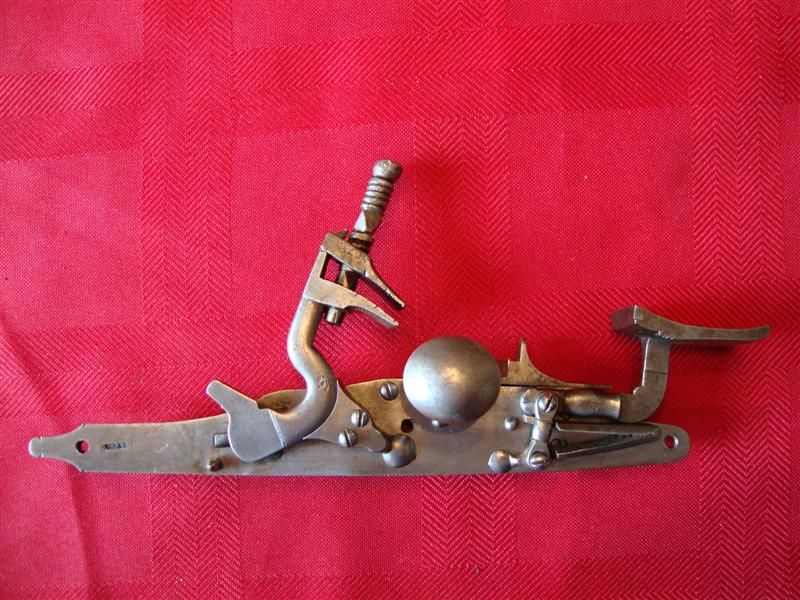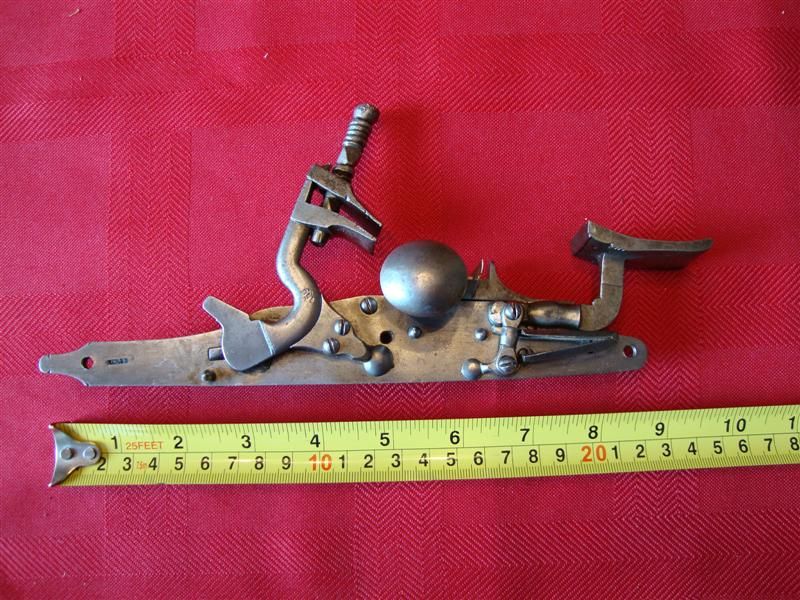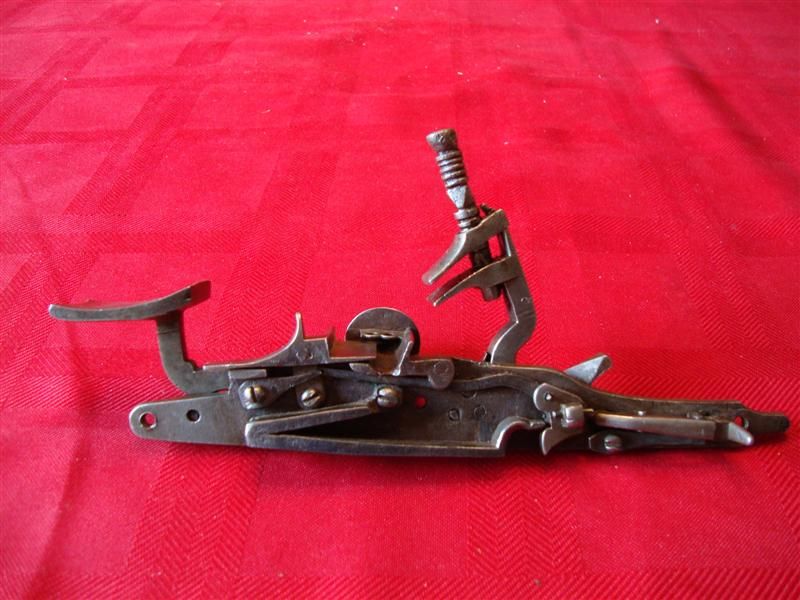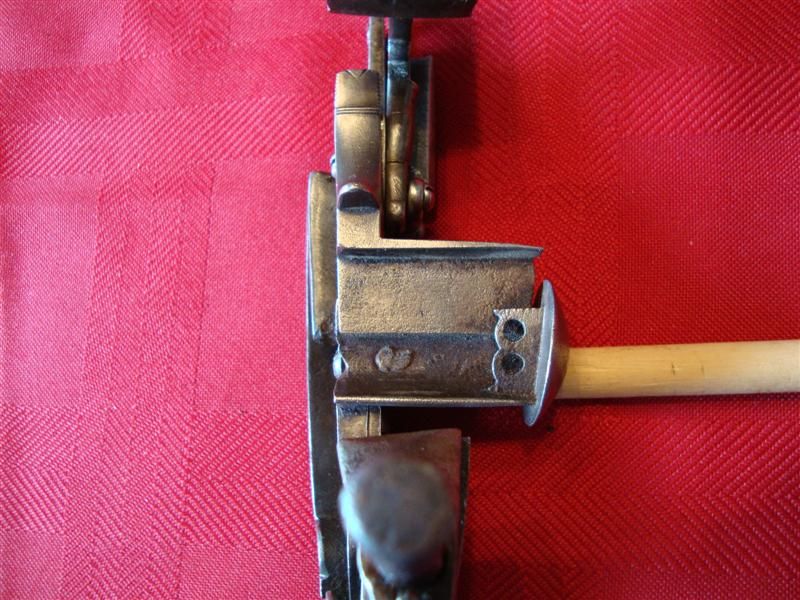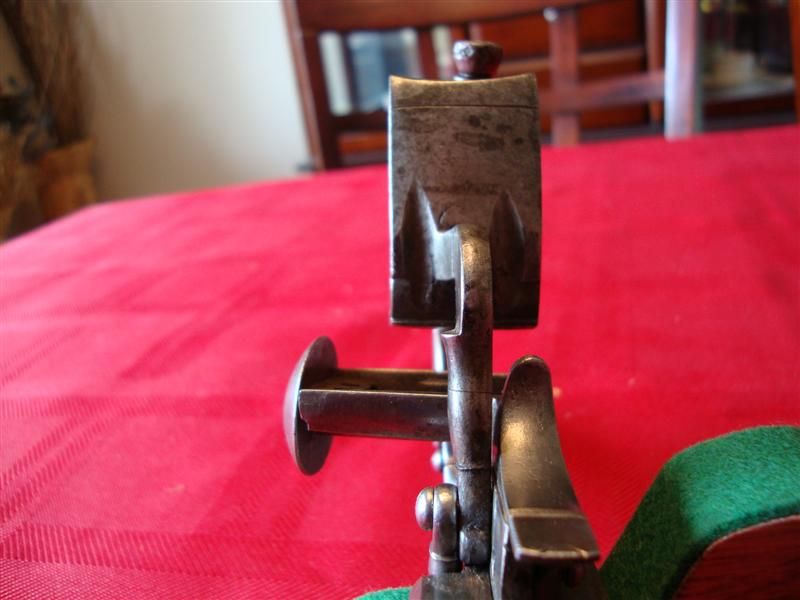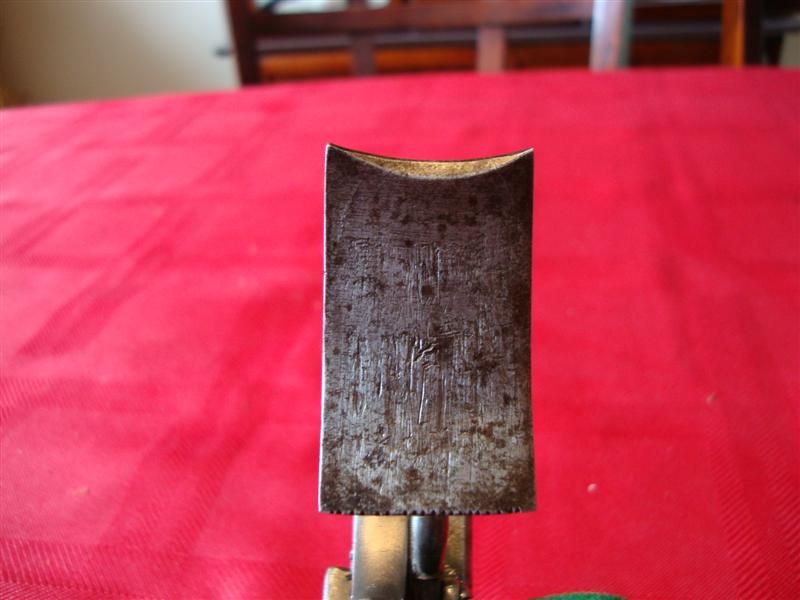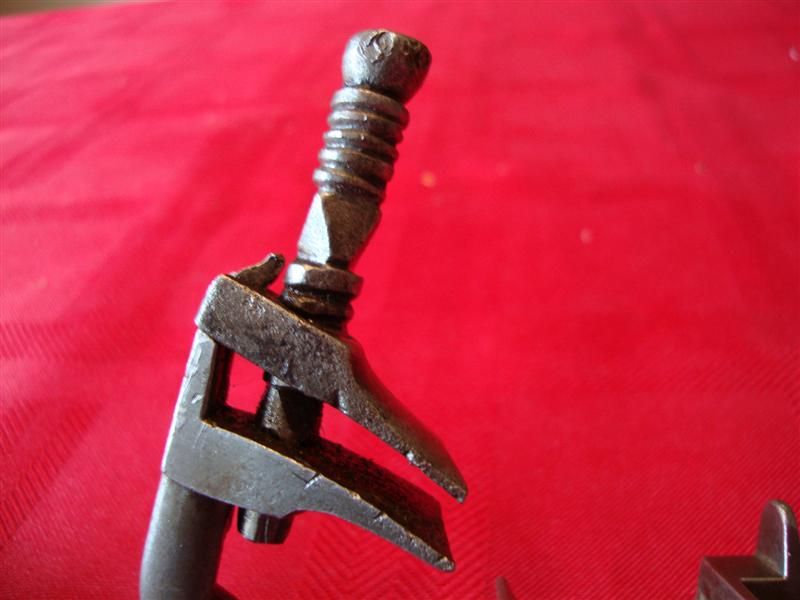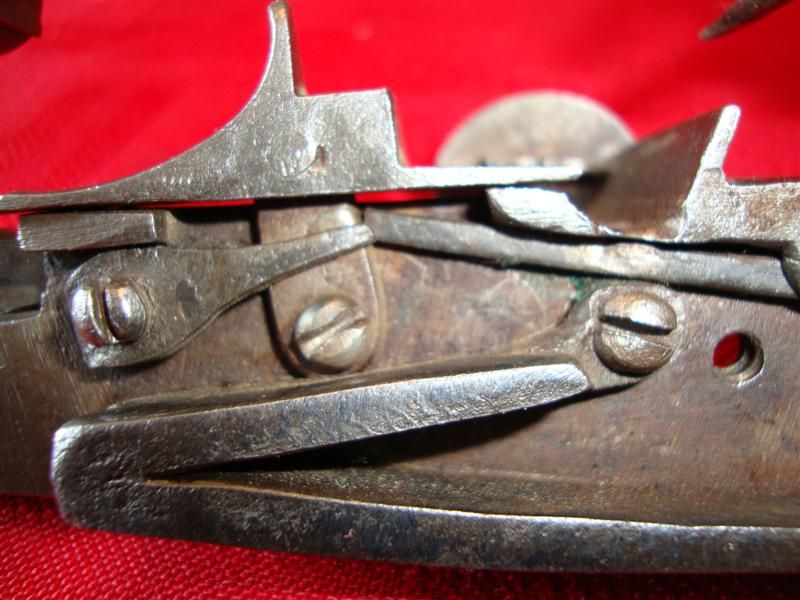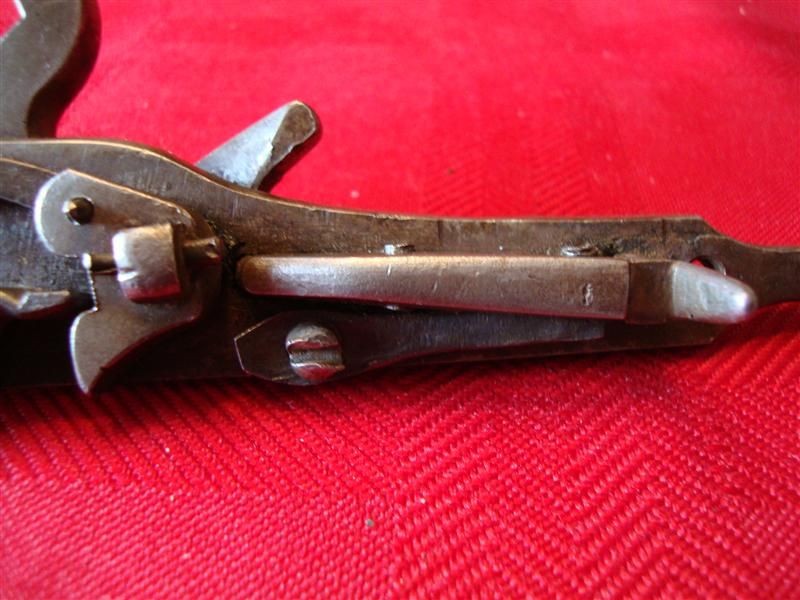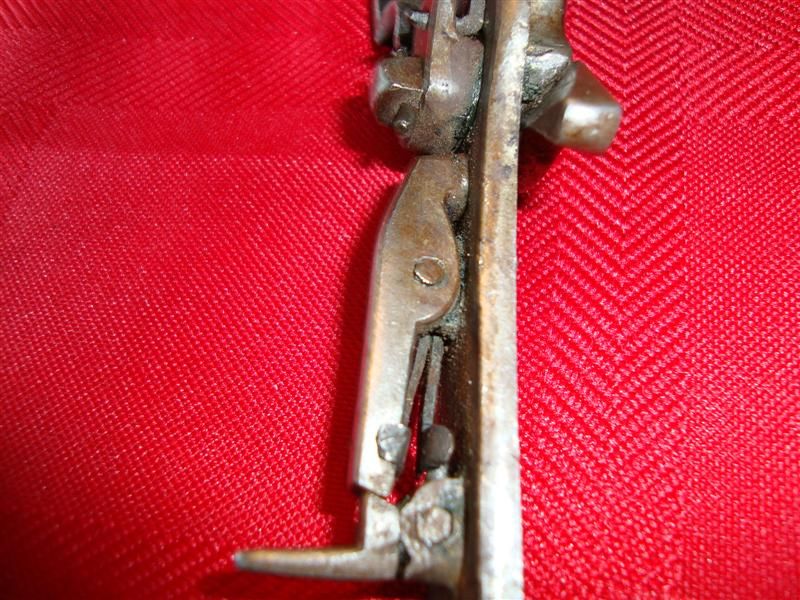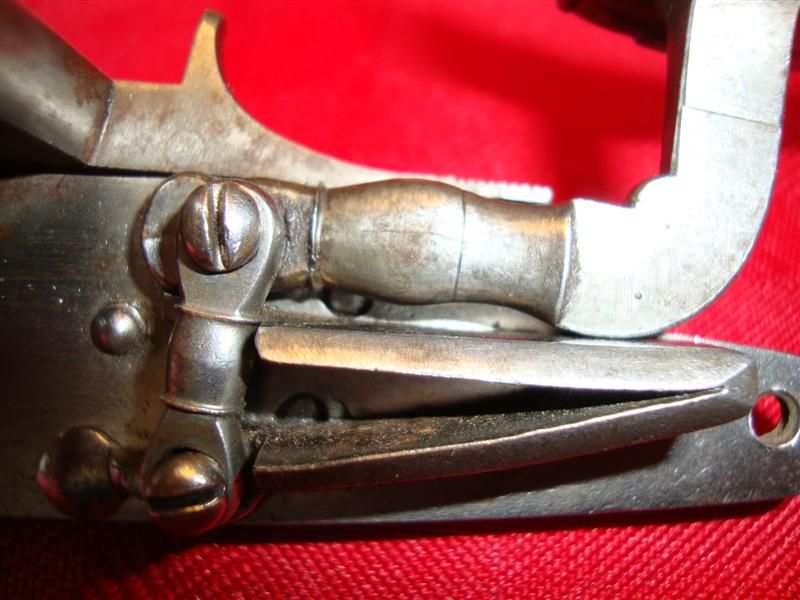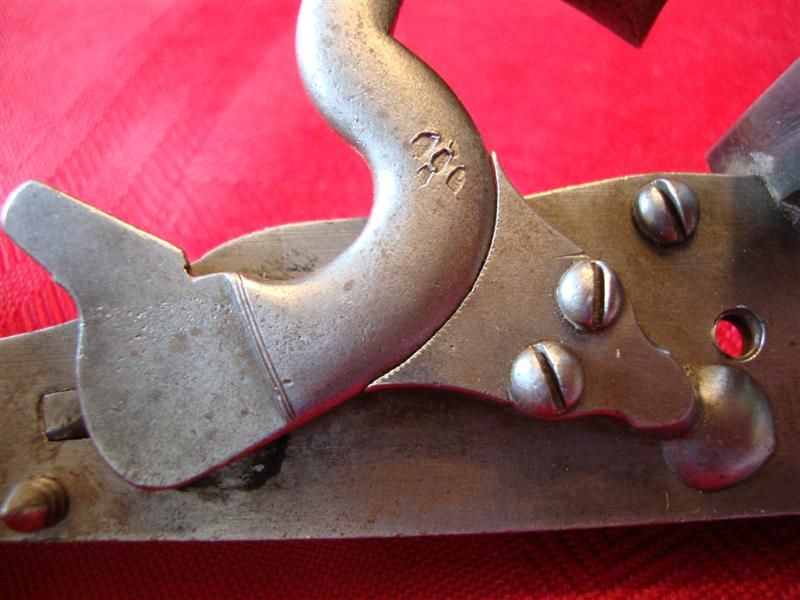- Joined
- May 24, 2005
- Messages
- 4,958
- Reaction score
- 4,326
Hello all. Here is the latest addition to my lock collection. I can't find any marks on it except 3 little nudges on the hammer. The lock is complete and in working order. In fact, the tumbler shows almost no wear. The lock does not show any cleaning (polishing) or any pitting what so ever. I truly believe this is a European lock. It has a couple features not found on later Middle Eastern copies, and it's a much better forging. The hammer and tail of the lockplate look English in style. But of course I'm not sure. The top screw is a real mystery. There are two sections of course threads. The bottom of the screw has no threads - and was made that way. It's almost like it's staked in the hole of the lower hammer jaw. Never seen anything like it. I think once I get the top screw un-stuck, I'll have a better idea of the relationship of holding the flint in the jaws. Do you think this lock could date from the very late 16th or very early 17th century? English? Italian? or ? Thanks for looking and any help. Rick.
